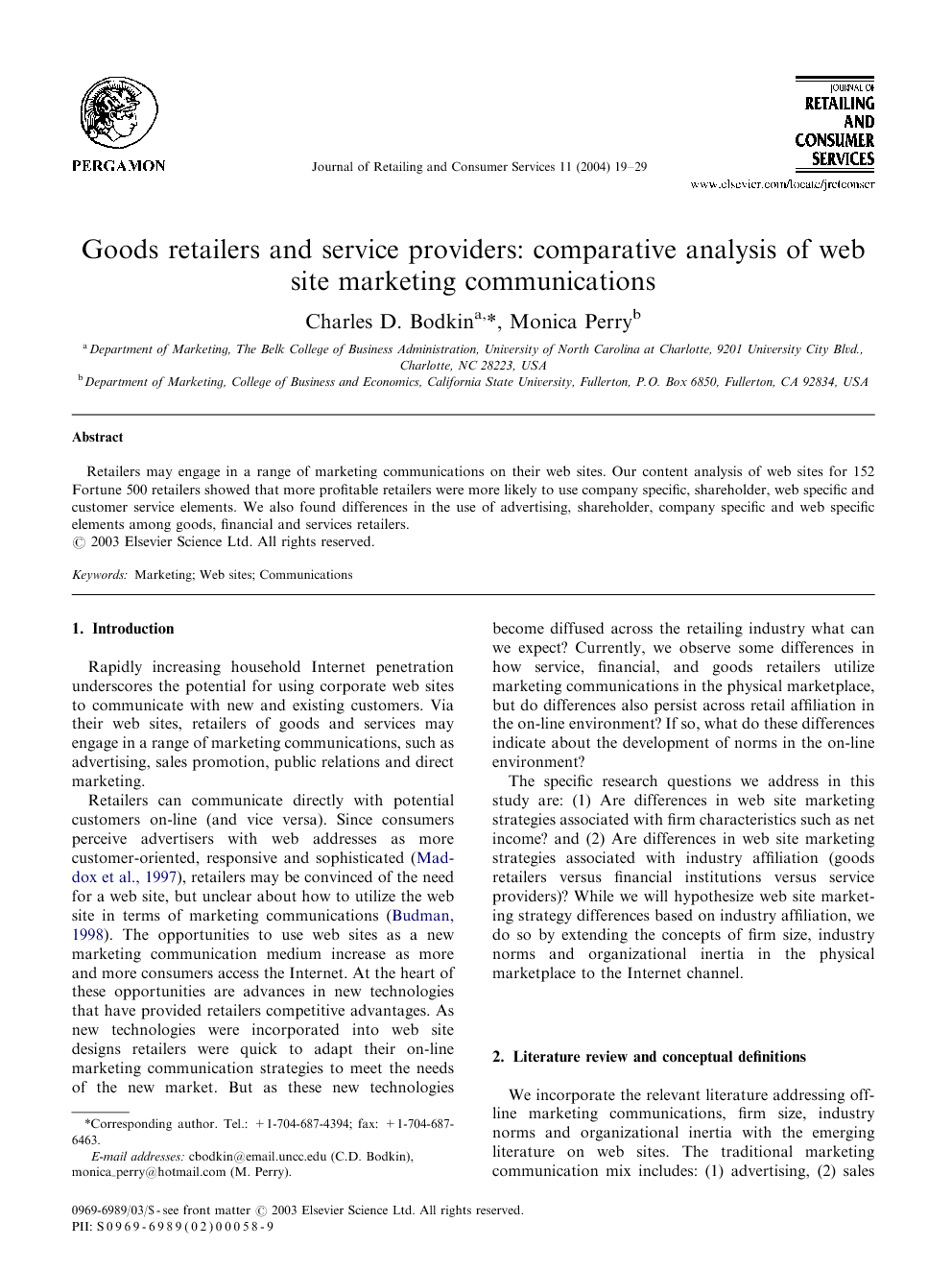ترجمه فارسی عنوان مقاله
محصولات فروشندگان و ارائه دهندگان خدمات: تجزیه و تحلیل مقایسه ای وب سایت ارتباطات بازاریابی
عنوان انگلیسی
Goods retailers and service providers: comparative analysis of web site marketing communications
| کد مقاله | سال انتشار | تعداد صفحات مقاله انگلیسی |
|---|---|---|
| 28973 | 2004 | 11 صفحه PDF |
منبع

Publisher : Elsevier - Science Direct (الزویر - ساینس دایرکت)
Journal : Journal of Retailing and Consumer Services, Volume 11, Issue 1, January 2004, Pages 19–29
ترجمه کلمات کلیدی
بازاریابی -
وب سایت ها -
ارتباطات
کلمات کلیدی انگلیسی
Marketing,
Web sites,
Communications

